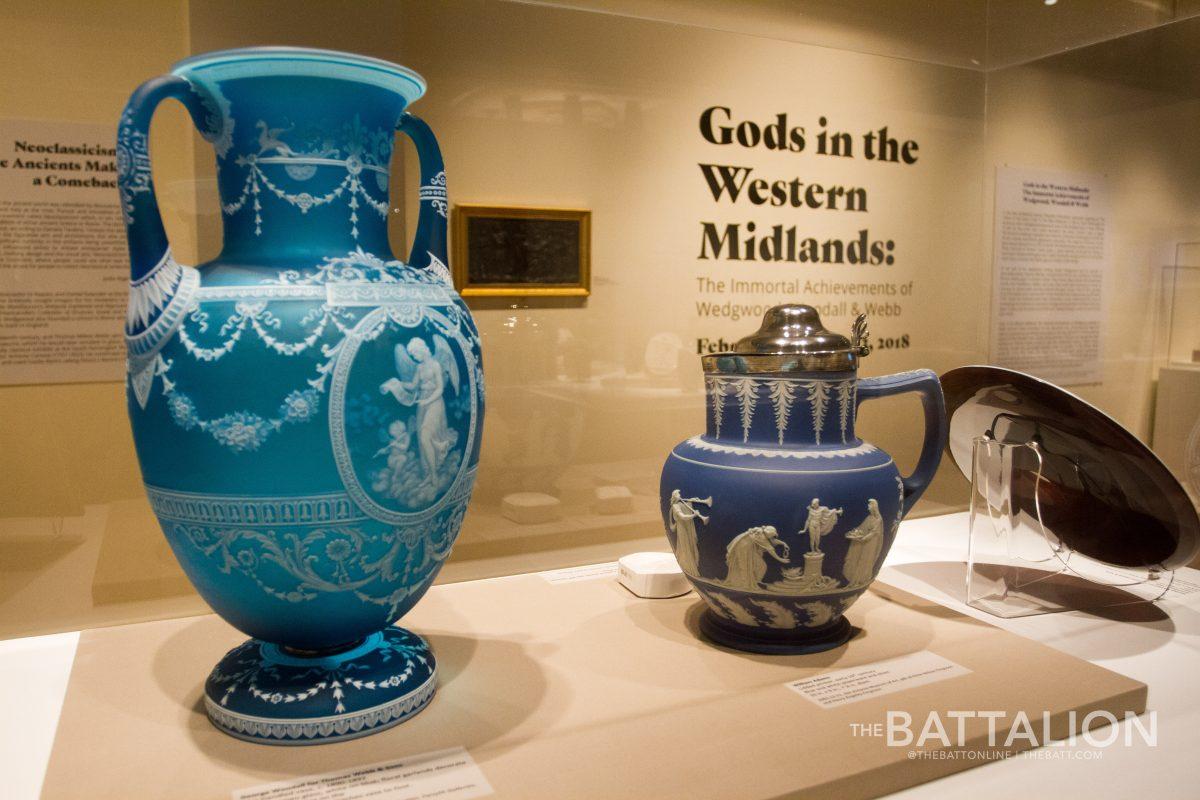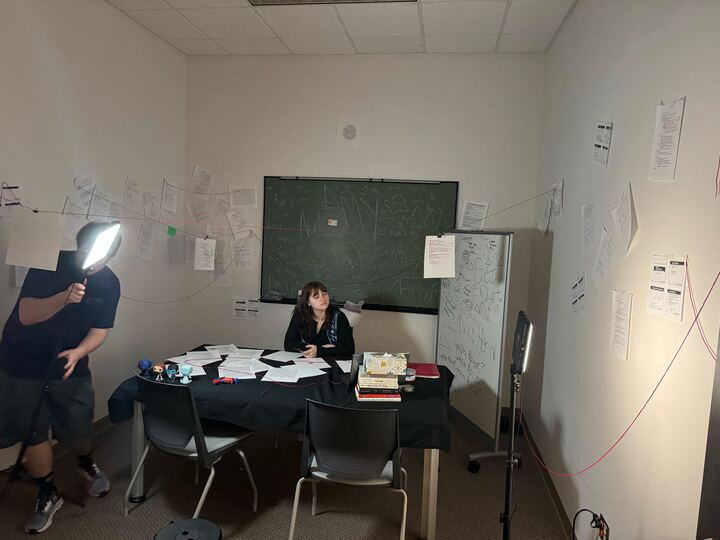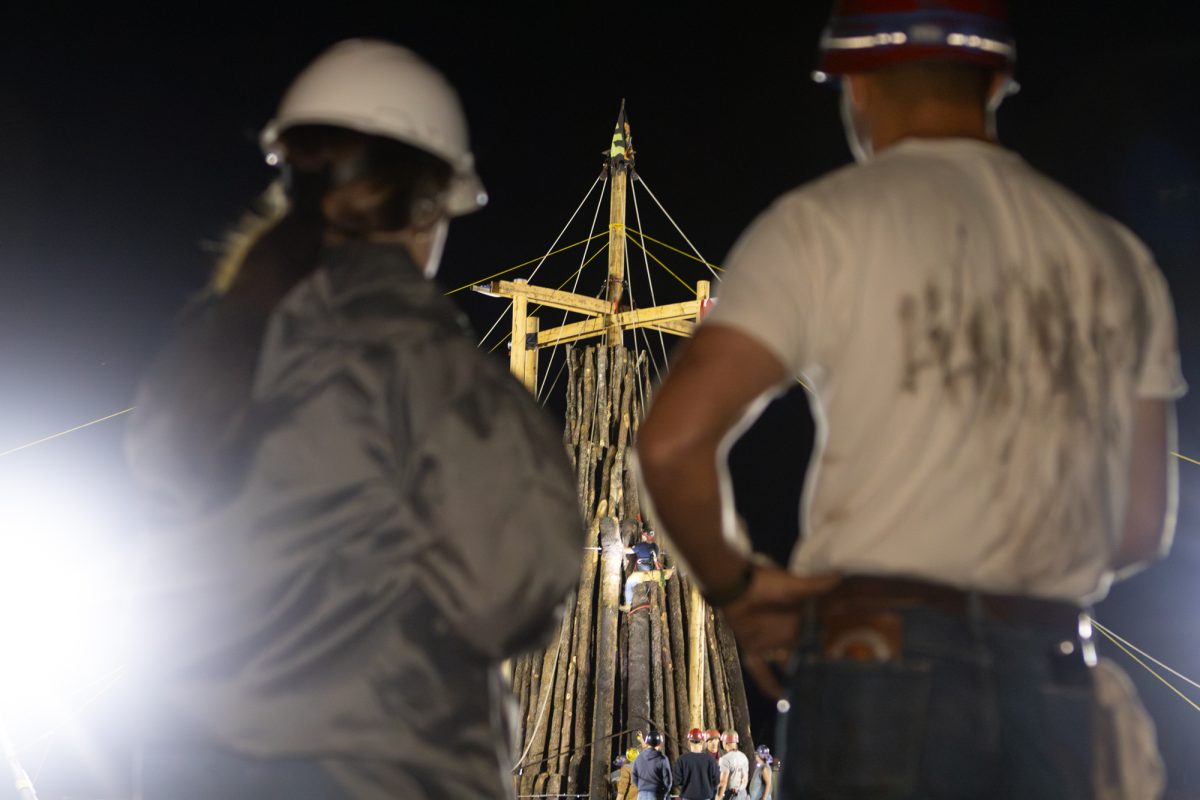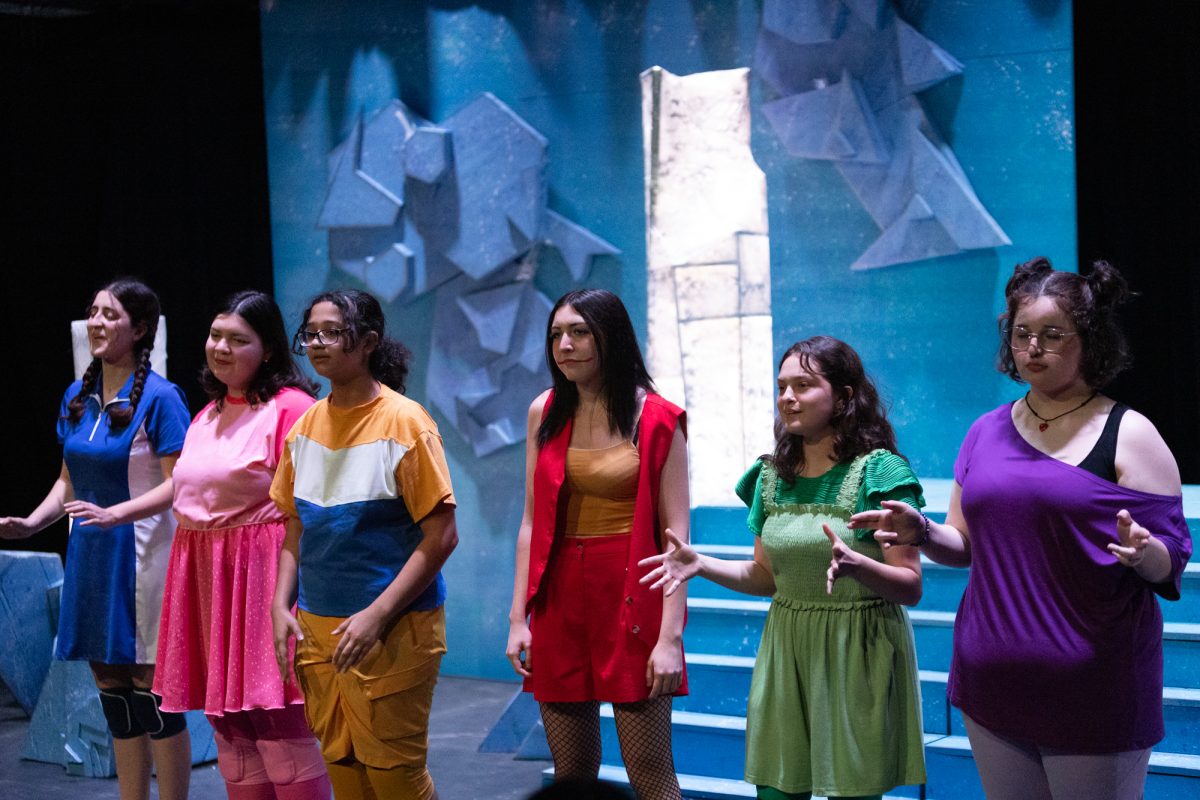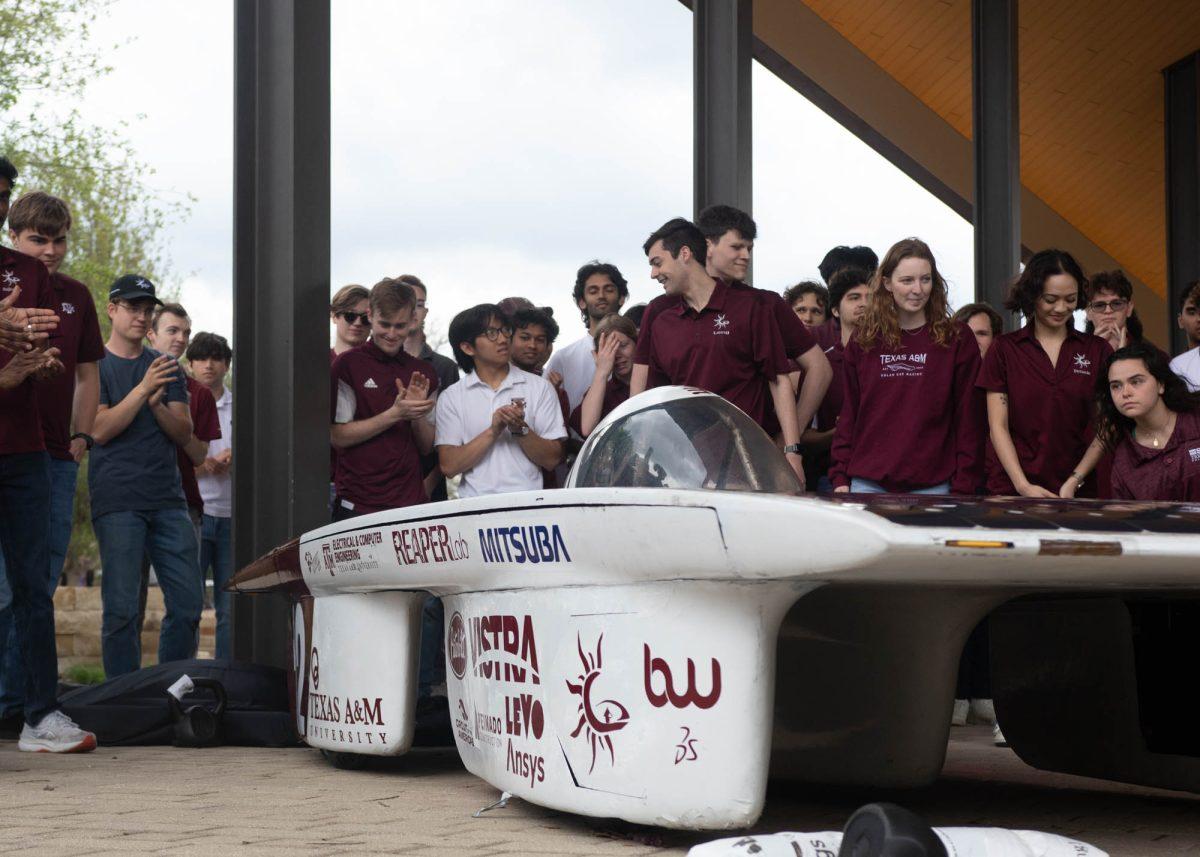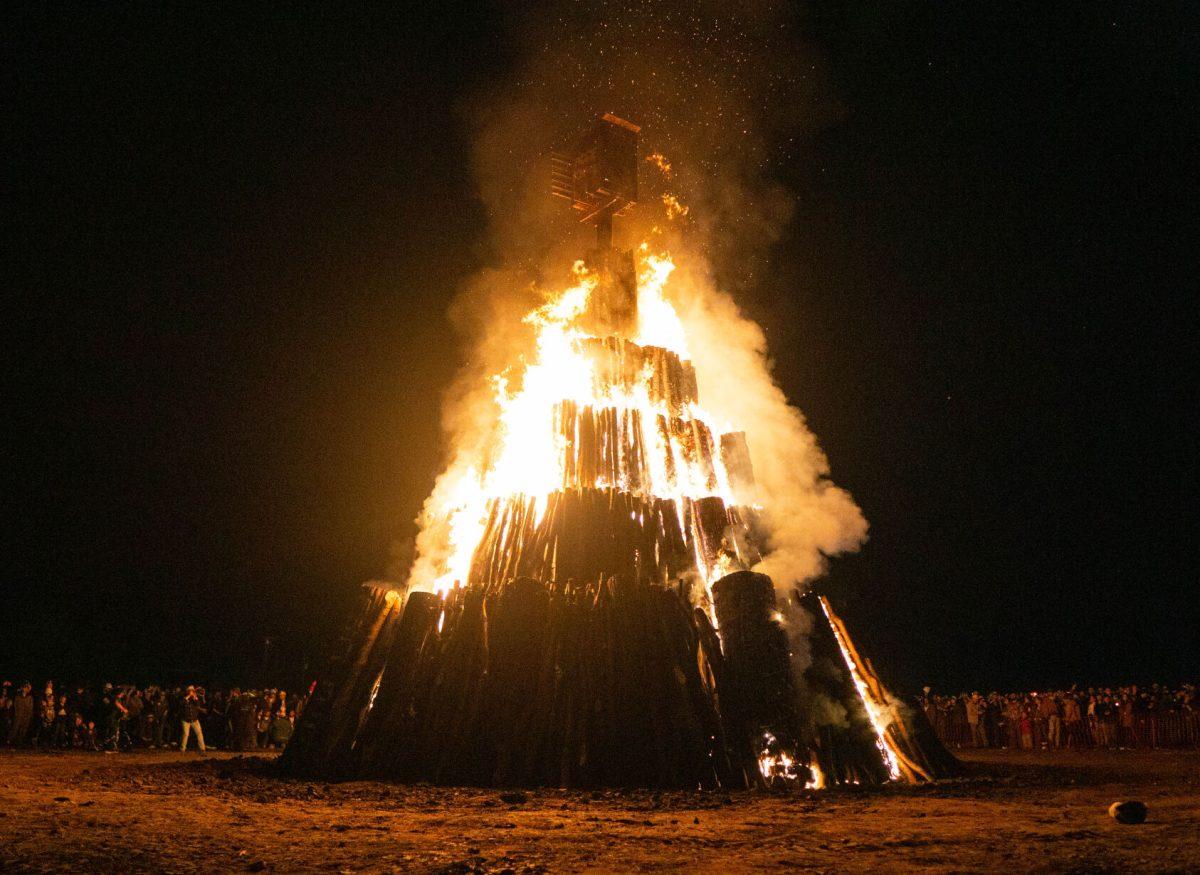Reflecting classical Roman art, renown artists contributed to the Industrial Revolution through their perpetual pottery and cameo glass production in the British West Midlands.
From Feb. 23 to May 13, the Forsyth Galleries at Texas A&M is showing the Gods in the Western Midlands: The Immortal Achievements of Wedgwood, Woodall & Webb exhibit. Curated by Susan Egenolf, English associate professor, the exhibit highlights the works created by 18th century potter, Josiah Wedgwood, and 19th century cameo glass artists, Thomas and George Woodall.
According to Egenolf, Wedgwood suffered from small pox, which led to the amputation of his leg. Because of the amputation, Wedgwood was unable to turn a potter’s wheel and as a result, experimentation became his specialty.
“He became a successful entrepreneur,” Egenolf said. “He’s credited with coming up with a lot of interesting marketing ideas. He was really good with figuring out how to work with the public. He took a small pottery manufactory and made it one of the most popular in Europe. He was an artist in the sense that he would work on design, but he had a lot of people that worked with him.”
Egenolf said when receiving pieces for the exhibit, one piece revealed a surprise upon opening.
“It is a blue Wedgwood piece with an ivy vine on it,” Egenolf said. “But, when it got unpacked and brought out, it actually had a little bird’s nest on it. It’s beautiful and it’s so detailed, but none of the images we had seen of it before it came here showed that side. You can’t believe that someone did this so many years ago in very poor lighting.”
George and Thomas Wooddall were an artistic team who focused on glass carving, according to Egenolf. Recreating Roman cameo glass in England, the Woodall’s worked in the 19th century for the Thomas Webbs & Son firm.
“The interesting thing is that they would fuse different layers of glass together and carve down through the glass,” Egenolf said. “They would sometimes use acid to eat away some of it, or used some tools. But a lot of it was done by hand. These guys started doing some carving and worked for a group that became the Woodall team. George is the more famous one, and a lot of the cameo glass owned by the Forsyth Galleries is designed and signed by him.”
Amanda Dyer, Forsyth Galleries assistant director, said the complementation of the Wedgwood pottery and English cameo glass is captivating.
“When Dr. Egenolf approached us with the idea for the exhibition two years ago I was intrigued, but seeing the pieces side-by-side in person has been really impactful,” Dyer said. “For me, the works illustrate very well the importance and wide influence of a very specific geographical area, time period and group of people.”
Foraging beyond the exterior of art, decorative arts generates more than an ornament: social and historical reasons explain the popularity of certain pieces.
“It’s interesting for students to see this because there is often other information,” Egenolf said. “They carry more weight. We have a number of different information panels. Undergraduates helped write some of those in the learning gallery, and graduate students worked on the ones in the main gallery.”
Deanna Stover, English literature Ph.D. candidate, worked on the exhibit as the editor for the exhibition catalog and the exhibition blurbs. Stover said that while the matte color adds to her love of the collection, she credits Egenolf students’ contribution to the exhibit as her favorite facet.
“By going to this exhibit, students are not only supporting the arts and humanities, but also other Aggies,” Stover said. “Gods in the Western Midlands is a collaborative public humanities project, and I am so glad I got to be a part of it. I also think having exhibits like Gods in the Western Midlands allow for students at A&M to see some amazing art that they might otherwise not have access to. I wish I had gone to more exhibits like this when I was an undergraduate.”
A complementary pairing of classical cameo glass and pottery
April 4, 2018
0
Donate to The Battalion
Your donation will support the student journalists of Texas A&M University - College Station. Your contribution will allow us to purchase equipment and cover our annual website hosting costs.
More to Discover



